Renault Twingo and Safrane debuted in 1992 at opposite segments. Their ingenious characteristics and clever market positioning made them equally successful in the market
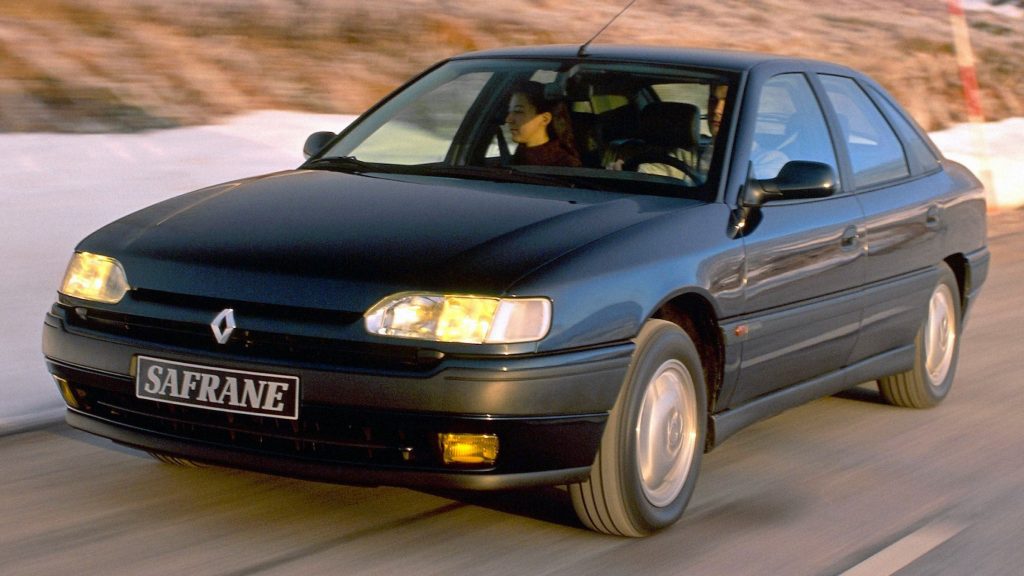
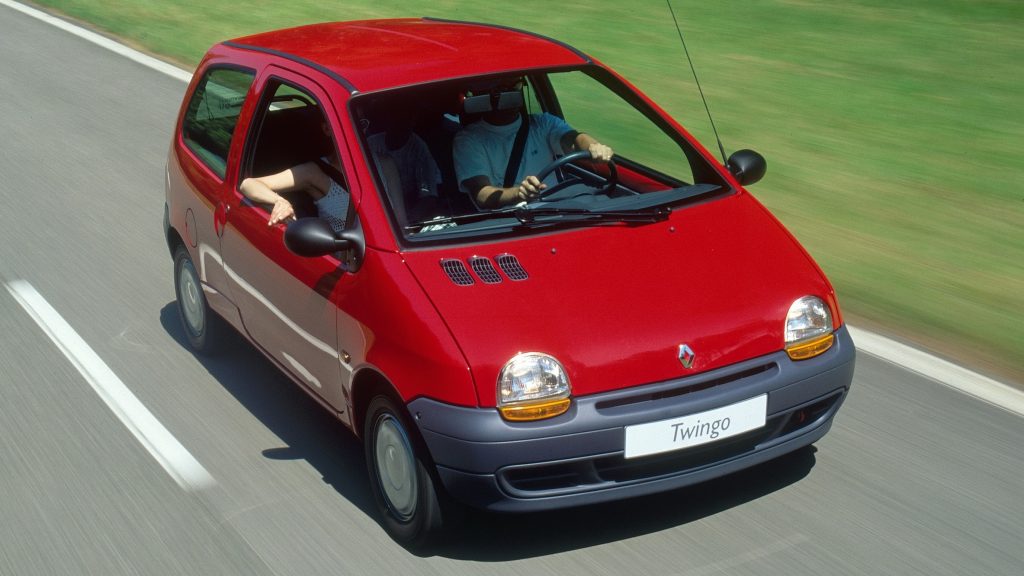
The 1990s were an interesting time for the car world. Electronics was no longer a science-fiction thing but was still far from mainstream. Aerodynamics became the priority in car design, but few automakers were bold to take their futuristic ideas to the production line. We know now that the decade was a transition to what we have today but, at that time, it had everything to be considered a revolution – and it was.
Renault was one of the many automakers embracing that revolution. However, its case stood out from the crowd for two main reasons. One is that it took the opportunity to change its car names from numbers to words, which we know is a big deal. The other is that, in 1992, it released the Safrane and the Twingo. Two all-new car models which seemed entirely different… until we take a closer look at what they offered.
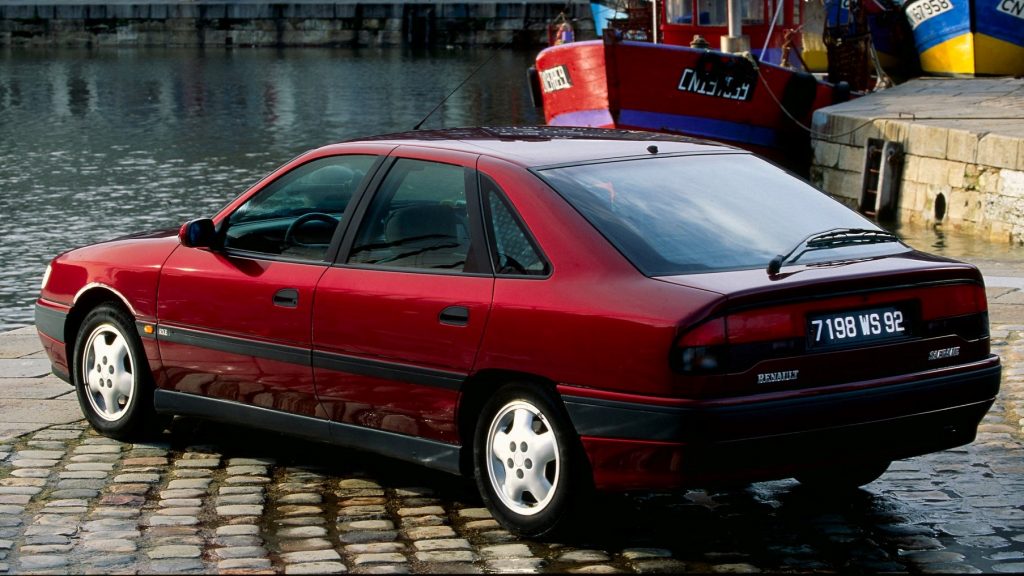
Renault Safrane against the Germans
The notchback body style was quite popular in Europe. In pre-SUV times, it was an interesting solution to combine the charming roofline of a sedan with the practicality of a hatchback. However, most automakers would keep it to niche markets. Ford, for example, offered it on Escort, Sierra, and Scorpio, but there were conventional bodies as well. French automakers were different: they went all in with their notchback cars.
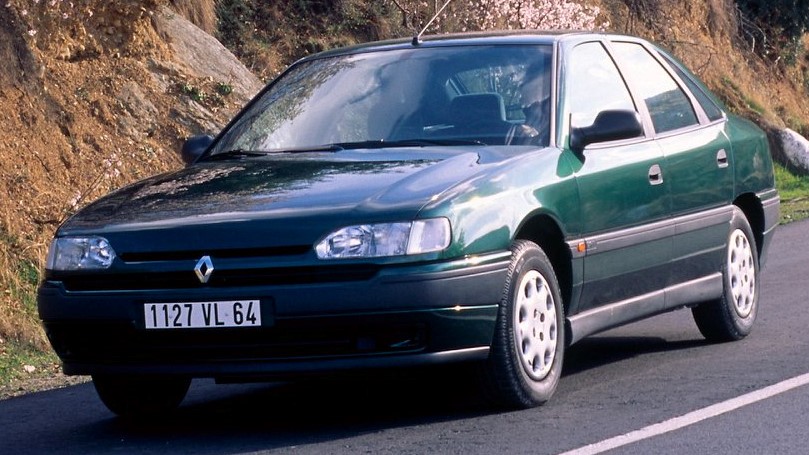
Rather than revolutionary, the Renault Safrane was indulgent. It massaged the abrupt transitions and boxy shapes that characterized the R25. Its successor became more elegant, albeit less impactful, than its direct rival Citroën XM. There were many trim levels, from the base RN to the sumptuous Baccara, and Renault did not skimp on the engines either: you could choose from the base 2.0L to a twin-turbo 3.0L V6.
The Renault Safrane turned out to be the quintessential executive car. Roomy, powerful, and comfortable while keeping a low profile. You could run errands during the week, dash through highways for hours, or make an entrance to an elegant restaurant using the very same car. However, if you thought that Renault would be satisfied with a niche market, you are wrong. There is more to know about this notchback.
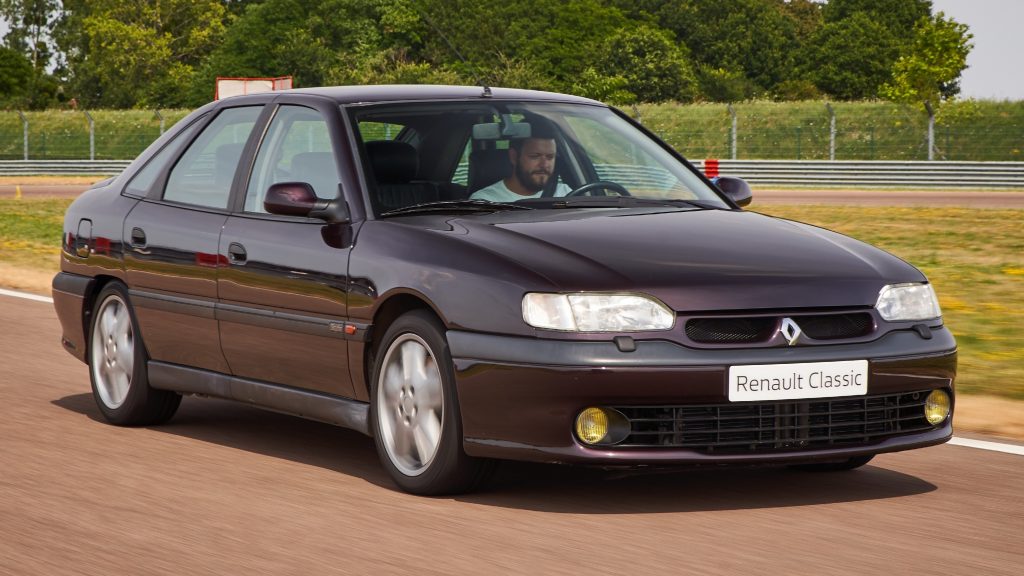
Renault Safrane Biturbo
If you thought the car could use some emotion, Renault agreed with you. In 1994, RXE and Baccara trims received the option of a twin-turbocharged 3.0L V6 engine. It was an evolution of the Alpine A610’s unit tuned by Hartge and Irmscher that made 258 hp. While the car had all-wheel drive as well, Renault had to fit it with a manual transmission. Sadly, that harmed its competitiveness especially against German cars.
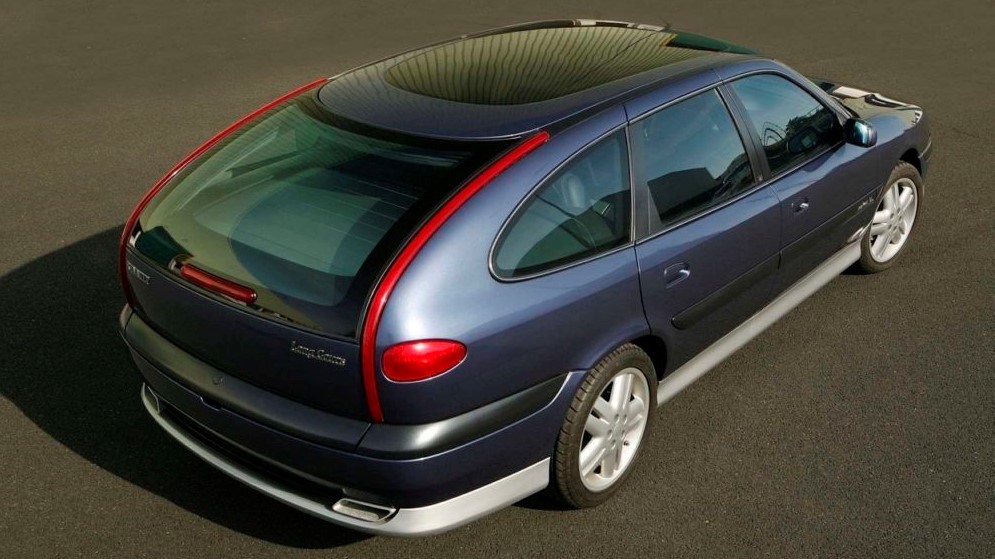
Now, if you are familiar with European cars of that time, you certainly know that station wagons were also popular then. Renault used the Safrane’s Biturbo version to spawn a conceptual SW sibling. It was built by Heuliez and named Long Cours. While the rounded C-pillars were even more modern than the rest of the car, the long, two-part taillights and the panoramic sunroof were downright futuristic for that time.
The Renault Safrane went through a mid-cycle facelift in 1996. While the front end lost the personality of yore, the rear became more stylish, albeit close to BMWs. The car sold 300,000 units in eight years of life, which is quite good for its market category. Renault replaced it with the Vel Satis in 2001, but it could not repeat that performance. The Safrane name would return on an unrelated South Korean sedan in 2008.
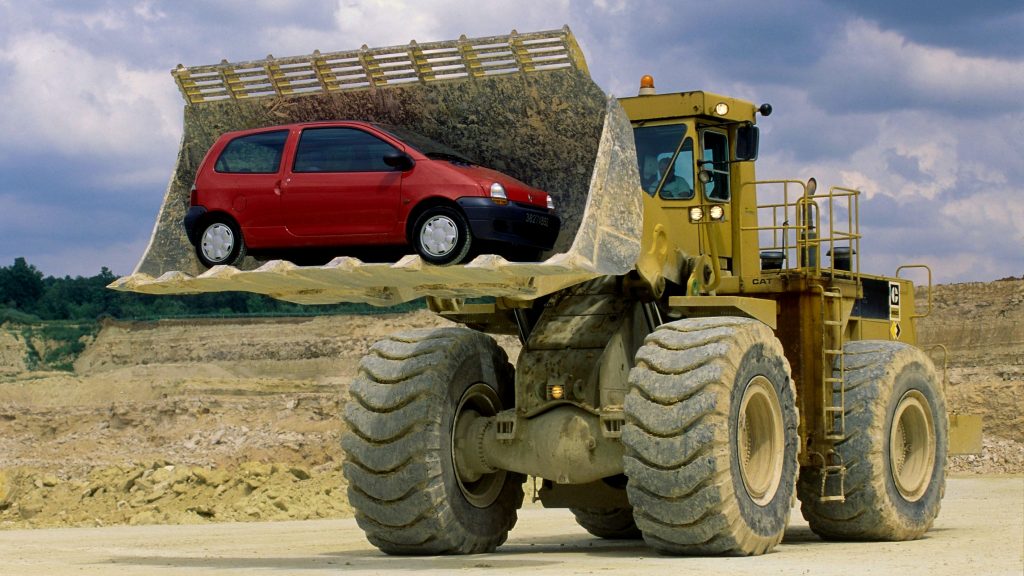
Renault Twingo: a clean-sheet design
On the opposite end of the lineup, the Renault Clio was on its way to replacing both R4 and R5. However, chief designer Patrick Le Quément knew there was room for yet a smaller model. The trick is that, instead of designing a miniature hatchback, like Citroën AX and Peugeot 106, Renault used a different inspiration. The Twingo can be considered a miniature minivan, the segment which was highly popular back then.

The only carried-over part was the first powertrain it used in 1992. The automaker developed an entirely new car with a boxy shape, big windows, and wheels pushed to the corners. The result was an impressive internal room for its size: it comfortably seats four adults. The rear seats had longitudinal adjustment for extra cabin or trunk room, and one could fully recline the front ones to create two individual beds.
As if the Renault Twingo needed more reasons to stand out, it had a central gauge cluster in the 1990s. It also featured unique trim colors and upholstery patterns as the picture above shows. The whole car had a youthful and energetic appearance, which was convenient to set it apart from the Clio’s stoicism. Renault would further improve it over the years, with items such as a fabric sunroof and a newer 1.1L engine.
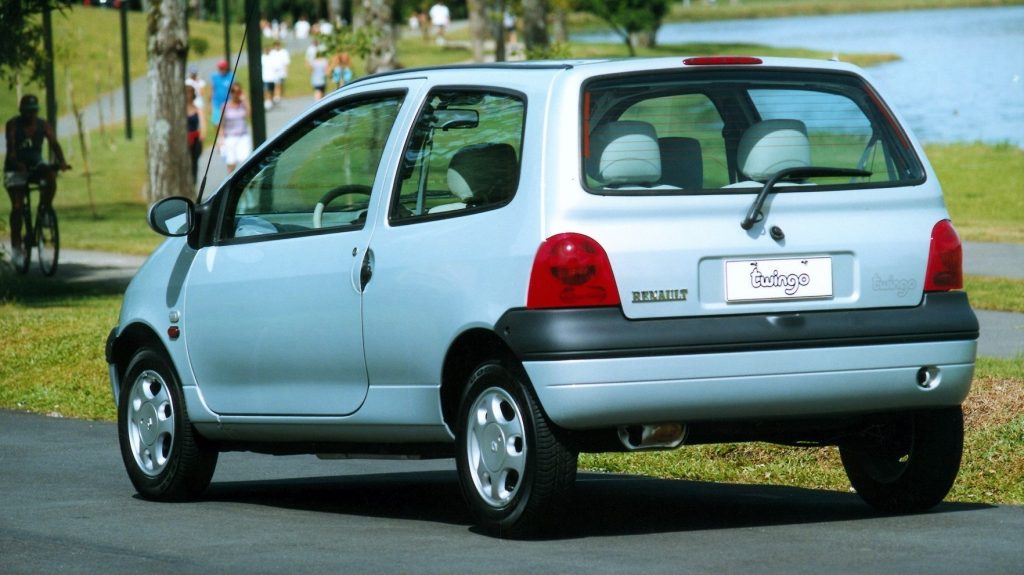
Evolutionary updates over time
The Renault Twingo sold so well that it would only receive minor updates over the next years. There were facelifts in 1998, 2002, and 2004, but only diehard fans could easily tell them apart. Rather than altering it, the company decided to improve the project. The supermini received larger wheels, a fancier trim version, a reinforced structure, refreshed light designs, new color schemes, and a semiautomatic transmission.
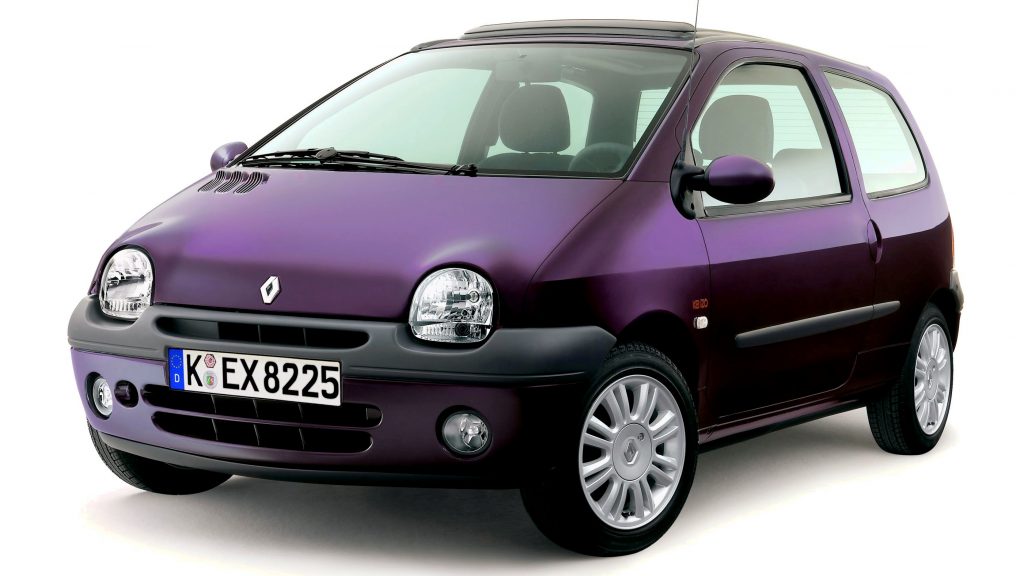
Over time, the Renault Twingo went to South America with Uruguayan production. That marked a special point in its history because that region has a much more conservative taste. It was necessary to offer new body colors and a less flashy internal trim compared to the European car. Besides that, the company had to rethink its equipment list so the car’s price would match that of its local direct competitors.
The supermini eventually reached its second generation in 2007. Newer platform, refreshed design, more efficient engines… The Renault Twingo became more modern but, unfortunately, the competition caught up with it. Actually, some of its direct rivals managed to beat it in a main aspect: the option of four doors. The model became a secondary participant in its segment up to 2014, when it reached its third phase.

The Twingo and the Safrane were parts of an interesting coincidence. Despite being physically different in everything, they reached the important balance of presenting innovations to their market segments while preserving characteristics that their target audiences would never overlook. That, along with the openness of the 1990s, helped those cars keep Renault in a leading position in the European market at that time.
Danillo Almeida has explored his passion for cars in two distinct ways. The first one is his graduation course in Mechanical Engineering, which will hopefully lead to a job position in the field. The other one is expressing his knowledge and opinions on the matter through writing. Almeida has already contributed to blogs, stores, and websites in general writing automotive content in many formats.



